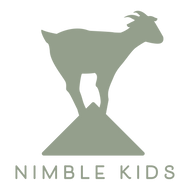3 Ways To Encourage Independent Play
Our daughter is now six years old, but it doesn’t feel like all that long ago that she was a toddler. As a working parent, I remember those years clearly. I felt frustrated, exhausted, guilty, and unequipped to deal with the constant need for attention.
When I would leave the room to get something done, she would yell out asking for me to come back and play. And back then I felt guilty and came to her call. Like this would somehow solve the problem!
What I didn’t know back then - which I know now - was that it didn’t need to be this way. It’s actually great for kids to learn to play independently.
When children play alone, they're learning valuable lessons they'll carry with them throughout their lives. Self led play helps your kids become well-rounded individuals who are happy whether they're in small groups, large crowds or alone.
And self led play also develops creativity. "We often tell our children exactly what to do and how to do it, or that toys should be used in a certain manner. But creativity is an outgrowth of exploration, of using something in a new way," says psychologist Kathy Hirsh-Pasek, Ph.D., author of Einstein Never Used Flashcards.
So although we think we are doing the right thing by coming to the call, in fact, we are helping our kids far more by giving them the space to play and explore on their own.
But how? Yes there’s more to independent play than leaving the room and waiting out the tantrum. When choosing the best educational toys for 2 year olds, consider these 3 simple ways to create an environment that encourages independent play:
1. Choose Stimulating Toys
Set up an inviting and challenging play environment. Watch what sort of toys hold your child’s attention (and which ones lose their interest quickly). As a general rule of them, the more active the toy, the less active the play.
Shop for Montessori climbing frames and toys which stimulate learning by encouraging kids to experiment. Some examples include Phonetic Reading Blocks, and Abacus, Construction Building Blocks, and our Indoor Climbing Frames.
TIP: Take out any toys that they have outgrown or that are too easy. Limit the amount of “one and done” toys - you know those flashy ones that often have batteries and that usually hold attention for about 1 minute!Choose 'Open Ended' Toys

2. Choose 'Open Ended' Toys
Children’s brains are born hardwired to explore, learn, discover and create. They crave opportunities to let their mind run wild testing ideas and finding solutions. Open ended toys allow children to make choices, express their creativity, and support their independence. These types of toys also support their cognitive, language and social skills.
Some examples of these toys are magnetic tiles (e.g. Magblox), Lego, objects from nature, blocks, paints, playdough, wooden play gyms, and our Small Pikler and Shape Sorter.

3. Invite Your Child To Explore
It might take some time for your child to play independently, because they don’t know how to do it. So, you’ll have to be their imagination coach. An effective trick is to create invitations to play by giving them a story and challenge that they can work through. Simply place all the material out to do a project and let them go to town.

Summary
It might take a little while for your child to learn how to play independently, but the benefits are so worth it! Teaching toddlers to entertain themselves doesn't just help young kids build creativity and critical-thinking skills, it’s an essential sanity-saver for busy parents!
Be patient and fill their emotional cup when needed. And don’t forget to rely on your friends for a little advice!
Some excellent references:
11 Important Types of Play For Growing ChildrenIndependent Play - One of the best opportunities to build skills crucial for children's future



















